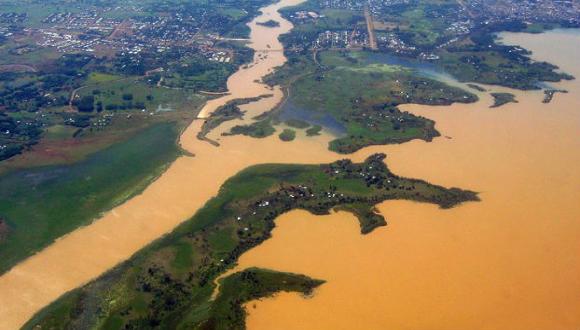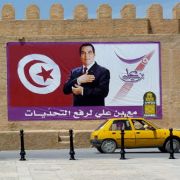Expert Analysis: Struggle over the Nile
The Struggle Over the Nile: Egyptians and Ethiopia
by Haggai Erlich
TEL AVIV NOTES, Volume 7, Special Edition No. 2
Moshe Dayan Center for Middle Eastern and African Studies
Egypt is facing enormous challenges. Its economy is fragile, its public is divided, and its leaders are torn between different and even contradictory options. The struggles to determine the appropriate cultural content of Egyptian life, the proper parameters of Egyptian politics, and the very definition of the nation are all highly contested matters, and are even physically fought over. For the time being, the prospects for achieving a modicum of consensus and stability appear remote. And while all of this is being played out in Tahrir Square and Egyptian boulevards, Egypt faces an additional and even potentially existential challenge of a different sort: Ethiopia, a country led by Christians, is building a huge dam on the Blue Nile, which provides some four-fifths of Egypt’s life-giving Nile waters.
“The Abbay,” “the father of rivers”—as the Ethiopians call the Blue Nile (they also call it "the Black Nile" for the color of its muddy waters)—runs a thousand kilometers in Ethiopia before it enters Sudan and then joins the White Nile to reach Egypt. For centuries, the Ethiopians, captive to their internal conflicts and underdeveloped economy, failed to exploit this vital resource. They simply let it flow away, downstream to Egypt. One would have to dig deep in the Egyptian delta to find soil that was not “imported” from Ethiopia via the Nile. This state of affairs was formally legalized in the course of the twentieth century: an agreement drafted by the British colonial rulers in 1929, and reaffirmed by the Egyptian and Sudanese authorities in 1959, granted Cairo and Khartoum exclusive “historical rights” over the Nile waters. The High Dam of Aswan, completed in 1971, cemented the Egyptians’ notion that they owned the river, both legally and practically.
However, in the sphere of international law regarding rivers, nothing is really binding. As of 1999, the upstream countries, led by Ethiopia, challenged the principle of "historical rights" and demanded the application of its polar opposite – "equitable share." But the Egyptians remained steadfast – the waters of the Nile – understood by them as a matter of life and death – belong to the "historical" owners, and to them only.
“Do not you know,” wrote the Ethiopian emperor Zara-Yakob in 1443 to the ruler of Egypt, the Sultan Zahir Jakmak, “that the Nile comes to you from my country, and that we can block it and stop the tide which irrigates your country? Nothing prevents us from so doing except for faith in God and caring for his children.” In fact, the Ethiopians, through their Christianity, have also claimed “historical rights” over the Nile. Mary, the mother of Jesus, they believe, herself declared that the Nile, the biblical Gihon, was Ethiopia’s. This medieval episode was just one case in a centuries-old Ethiopian–Egyptian dialogue replete with religious messages and mutual threats. But it was only in 2007 that Ethiopia shifted from words to deeds. In that year (the year 2000 in the Ethiopian calendar), Prime Minister Meles Zenawi launched “the Millennium Dam” project. Egypt declared this a one-sided illegal act and responded by working to prevent international financing for the enterprise. But Ethiopia has been gaining economic momentum and the plan, now a main national symbol, is being fulfilled with local financing, Italian engineering, and some Chinese assistance. Renamed “the Renaissance Dam,” its construction is already in its advanced stages. In August 2012, Prime Minister Meles Zenawi passed away, but the work continued unabated, and has passed the point of no return. Currently, the builders are diverting the river’s flow to enable further construction, and consequently, Ethiopian-Egyptian relations are entering into uncharted waters.
Egyptians, although torn by political and ideological rivalries, are united in their Nile anxieties. The idea that their “eternal river” is about to be controlled by others can hardly be grasped. The Ethiopians’ explanations and promises do not reassure them. For their part, the Ethiopians contend that everyone will gain with the new dam, for it is a win-win situation. The Renaissance Dam, they insist, is the right dam in the right place (unlike the Aswan). It is being built not far from where the British wanted to build the Nile’s "super dam" back in the early years of the 20th century. Establishing a reservoir for the whole Nile basin in the heights of Ethiopia, in the deep and relatively narrow gorge of the Blue Nile, they contend, is the proper course of action. The new dam, the biggest in Africa, is designed to provide sufficient electricity for all riparian countries. At the same time, it will increase the available quantity of water. Lake Nasser, created by the Aswan Dam, is located in a perpetually dry and hot area; some one-sixth of its water evaporates annually. In contrast, say the Renaissance Dam’s Ethiopian proponents, practically no water will be lost in the Ethiopian heights, and the surplus thus created will be more than enough for Ethiopia's irrigation needs. Hence, they say, Egypt will not lose waters, but rather will gain cheap electricity.
With the new dam’s construction being a fait accompli, the people of Egypt will have to accept the fact that their main lifeline will soon be controlled by others—by a Christian-majority country no less, with which they share a very complicated history. In general, the Egyptian political public is divided into three. Each section has a different vision regarding the future of the Egyptian state and society, which appear to be mutually exclusive of each other—a prescription for a long period of instability. Regarding the Nile–Ethiopian dimension, each section has its own set of conceptions, none of them without internal tensions and contradictions.
The “liberal-secular modern Egyptian” portion of society advocates, on the one hand, good neighborliness on the basis of regional and even domestic pluralism (e.g., the Egyptian Copts were always connected to Ethiopian Christianity). On the other hand the secular liberals never forget that Ethiopia had a major role in undermining the early twentieth century Egyptian nationalists’ dream of uniting the Nile valley under their leadership. (For example, one of the prominent young leaders of the liberal camp, Ahmad al-Muslimani – who was recently appointed spokesman for the new interim president – published a book this year vehemently smearing Israel and contending that, by building the new dam, Ethiopia is cooperating with the Mossad in order to destroy Egypt.)
The second grouping consists of the military officers and members the security establishment who provided the state’s backbone of authority under Nasser, Sadat, and Mubarak. They regard relations with Ethiopia with both paternalism and wounded pride (the Egyptian army was disastrously defeated by the Ethiopians in 1876, and in the 20th century, revolutionary Arab nationalists lost neighboring Eritrea to the local Christians). On the other hand the army officers are strongly connected to the U.S., and the Americans would certainly do everything in their power to prevent them from taking aggressive military action which would destabilize the whole region. One can only speculate what the officers’ policy or advice would be should a more heated crisis develop over the Nile.
No less relevant are the Islamist groups, particularly in light of Islam’s very long set of traditions and conceptions regarding Christian Ethiopia, harking back to the very days of the Prophet Muhammad. Whenever Ethiopia was on the agenda of Muslims, these deep-rooted conceptions resurfaced in importance. In fact, Christian Ethiopia was the first state towards which the early Muslims forged diplomatic relations, as overseen by the Prophet himself, an episode which left significant formative legacies.
According to Islamic tradition, when the Prophet’s community of followers was still quite small and threatened with destruction by the Arab pagans of Mecca, he instructed them to flee to Christian Ethiopia and seek asylum with its “righteous and just" Christian ruler, "a king who oppresses no one". Indeed, “the first hijra” (migration) to Ethiopia became a story of Islamic salvation, and the Prophet left a message to remember Ethiopia gratefully and accept its legitimacy as long as it “leaves the Muslims alone”; namely, does not interfere with their lives and their rights. However, according to the same Islamic tradition, fifteen years later, the same Ethiopian king, having corresponded with Muhammad, himself converted to Islam. His ensuing deposition by the Christian Ethiopians was therefore an act of betrayal and heresy. Thus, according to some readings of the tradition, good Muslims should avenge this first defeat of Islam and work to Islamize Ethiopia.
Consequently, Muslims can choose how to view their relations with Ethiopia. For moderates, Ethiopia is a good neighbor and a legitimate friend by the order of the Prophet. For radicals, it is the embodiment of irtad, the ultimate sin, a land and people which had adopted Islam and then abandoned it. In the era of modern nationalism, this dichotomous Islamic conceptualization of Ethiopia was transmitted, adapted, and absorbed into the conceptual reservoirs of modern Egyptian and secular Arab nationalist ideologies.
If the people of Egypt can be convinced that by building the Renaissance Dam the Ethiopians “do not oppress them,” and that they are "leaving the Muslims alone" without undermining their existence, then they can adopt the moderate position of engaging in constructive relations with Ethiopia. If, however, Egyptians come to the conclusion that the Ethiopians are using their control of the Nile to threaten them, that they are not “leaving them alone," then the militants will possess the legitimacy to call for a war against Ethiopia as a land which requires the Islamic, Arab, and the Egyptian sword.
Haggai Erlich is Professor Emeritus of TAU's Department of Middle Eastern and African History. He is the author, among other books, of “The Cross and the River–Ethiopia, Egypt and the Nile,” and “Alliance and Alienation – Ethiopia and Israel in the Days of Haile Selassie.”
 TEL AVIV NOTES is an analytical update on current affairs in the Middle East, published by Tel Aviv University’s Moshe Dayan Center for Middle Eastern and African Studies, with the support of the V. Sorell Foundation.
TEL AVIV NOTES is an analytical update on current affairs in the Middle East, published by Tel Aviv University’s Moshe Dayan Center for Middle Eastern and African Studies, with the support of the V. Sorell Foundation.






